Search Results
Filters
Advanced Search
2176 Results
-
Advanced Validation and Functional Verification Techniques for Complex Low Power SoCs
Resource (Slides (.PDF)) - Apr 13, 2016 by Joe Hupcey
-

Questa Visualizer - Power Aware Debug
Demo - Mar 18, 2016 by Chuck Seeley
In this demo, you will learn the UPF based Power Aware Debug features available in Visualizer with Questa PASim.
-
Introducing the Verification Academy Patterns Library!
Resource (Verification Horizons Blog) - Mar 16, 2016 by Harry Foster
If you have been involved in either software or advanced verification for any length of time, then you probably have heard the term Design Patterns . In fact, the literature for many of today’s testbench verification methodologies (such as UVM) often reference various software or object-oriented related patterns in their discussions.
-
Walking
Resource (Pattern) - Mar 16, 2016 by Harry Foster
The walking pattern will be applicable for anyone focused on integration verification to effectively verify connectivity between various modules such as Address and Data bus. These are very commonly patterns used in stimulus and verification of RAM address and bus connectivity.
-
Strategy
Resource (Pattern) - Mar 16, 2016 by Harry Foster
This pattern helps implement one of the basic principles of Object Oriented programming and defines a family of algorithms, encapsulate each one, and make them interchangeable. Strategy lets the algorithm vary independently from clients that use it.
-
No RTL Yet? No Problem - UVM Testing a SystemVerilog Fabric Model
Resource (Paper (.PDF)) - Mar 15, 2016 by Rich Edelman
SystemVerilog is a powerful language which can be used to build models of RTL in order to facilitate early testbench testing. The early RTL model uses higher level abstractions like SystemVerilog threads, queues, dynamic arrays and associative arrays. Using high level abstractions allows a functional model to be created with little effort. A simple fabric model is created implementing AXI-like READY/VALID channels.
-
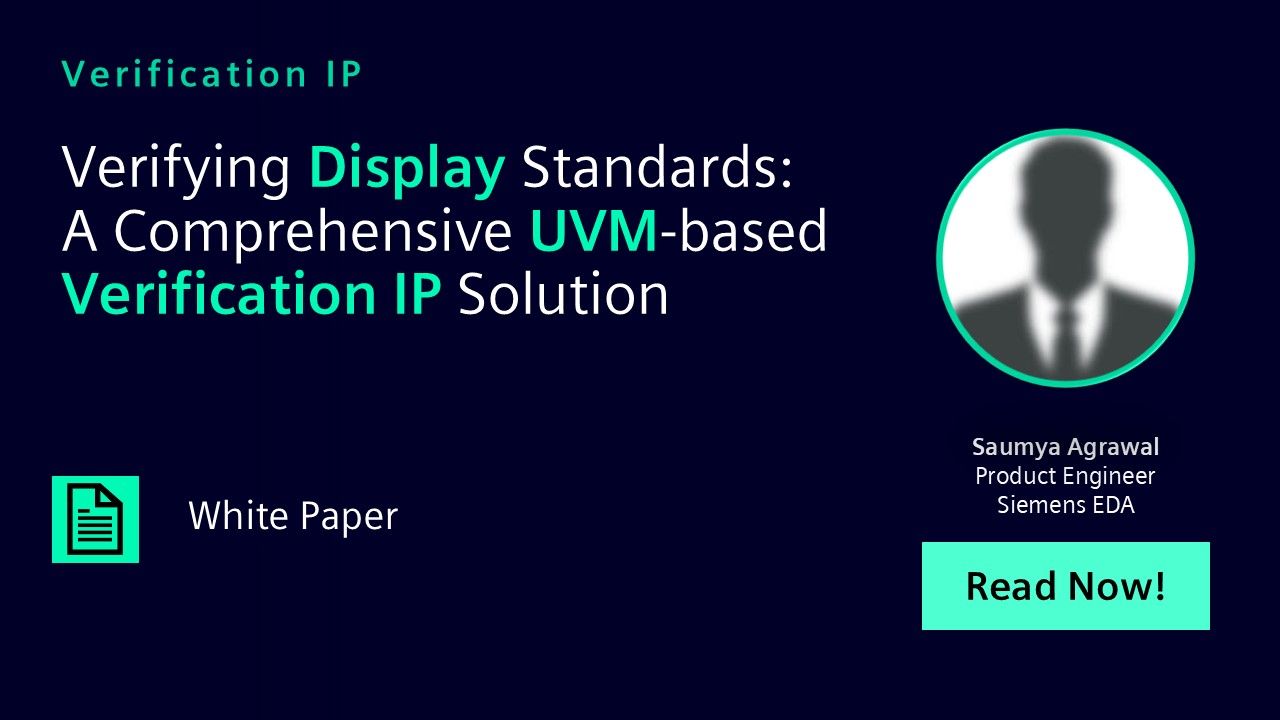
Verifying Display Standards: A Comprehensive UVM-based Verification IP Solution
Paper - Mar 12, 2016 by Saumya Agrawal - Siemens EDA
The display protocol IP market is growing at a very fast pace. This is chiefly the outcome of the incredible increase in popularity of a wide variety of display source devices: such as DVD players, computer systems, and display sink/receiver devices: such as televisions, projectors, and display instruments. End users, the consumers, have also become more technologically savvy, increasing the demand for more and better products.
-
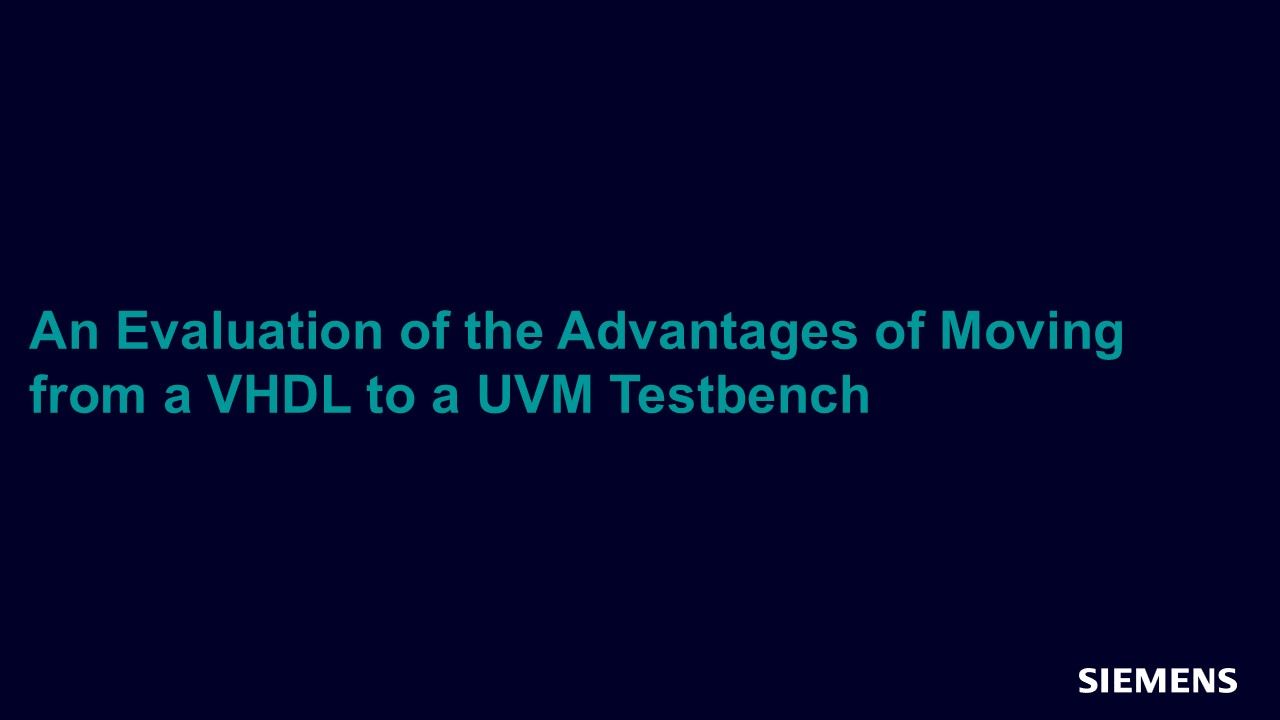
An Evaluation of the Advantages of Moving from a VHDL to a UVM Testbench
Article - Mar 02, 2016 by Shaela Rahman - Baker Hughes
FPGA designs are becoming too large to verify by visually checking waveforms, as the functionality has become beyond easy comprehension.
-
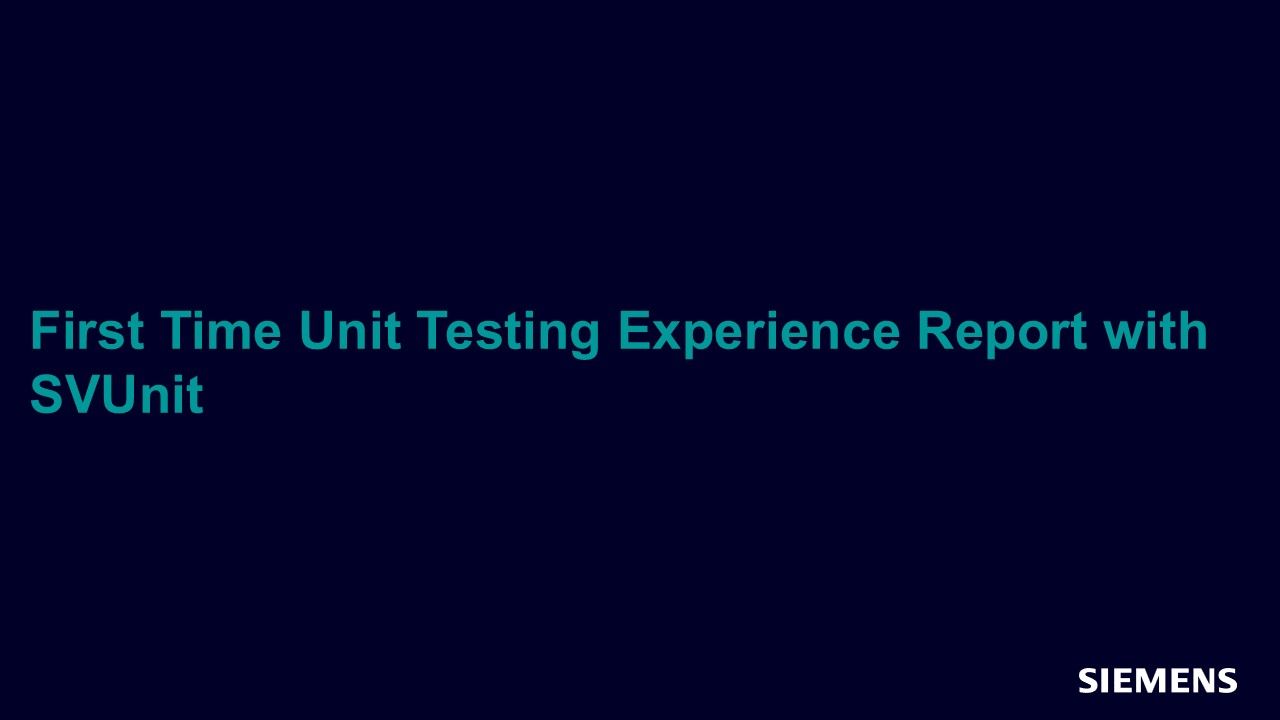
First Time Unit Testing Experience Report with SVUnit
Article - Mar 02, 2016 by Neil Johnson
Verification teams don’t typically verify testbench components. But this Qualcomm Technologies IP team realized the necessity of unit testing a critical testbench component and the corresponding debug time and frustration it could prevent for downstream IP and chip teams.
-

The Verification Academy Patterns Library
Article - Mar 02, 2016 by Harry Foster
The literature for many of today’s testbench verification methodologies (such as UVM) often reference various software or object-oriented related patterns in their discussions. For example, the UVM Cookbook (available out on the Verification Academy) references the observe pattern when discussing the Analysis Port .
-
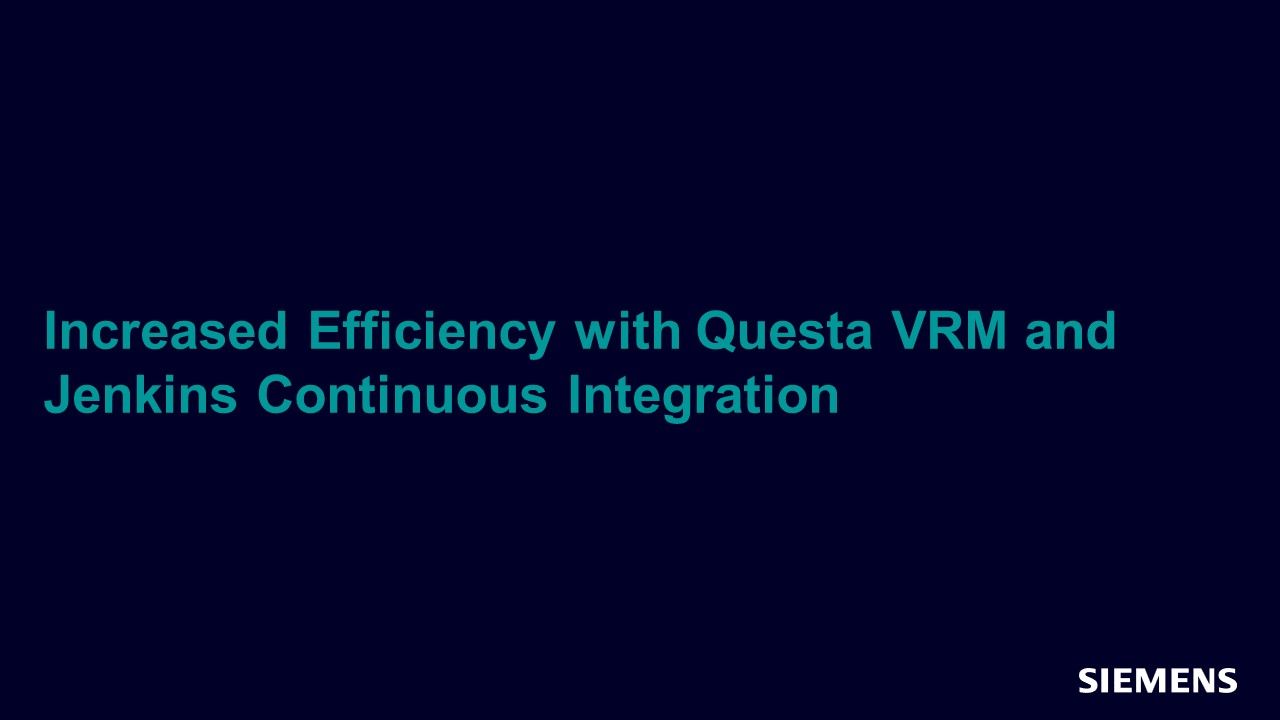
Increased Efficiency with Questa VRM and Jenkins Continuous Integration
Article - Mar 02, 2016 by Thomas Ellis
For all the incredible technological advances to date, no one has found a way to generate additional time. Consequently, there never seems to be enough of it. Since time cannot be created, it is utterly important to ensure that it is spent as wisely as possible.
-
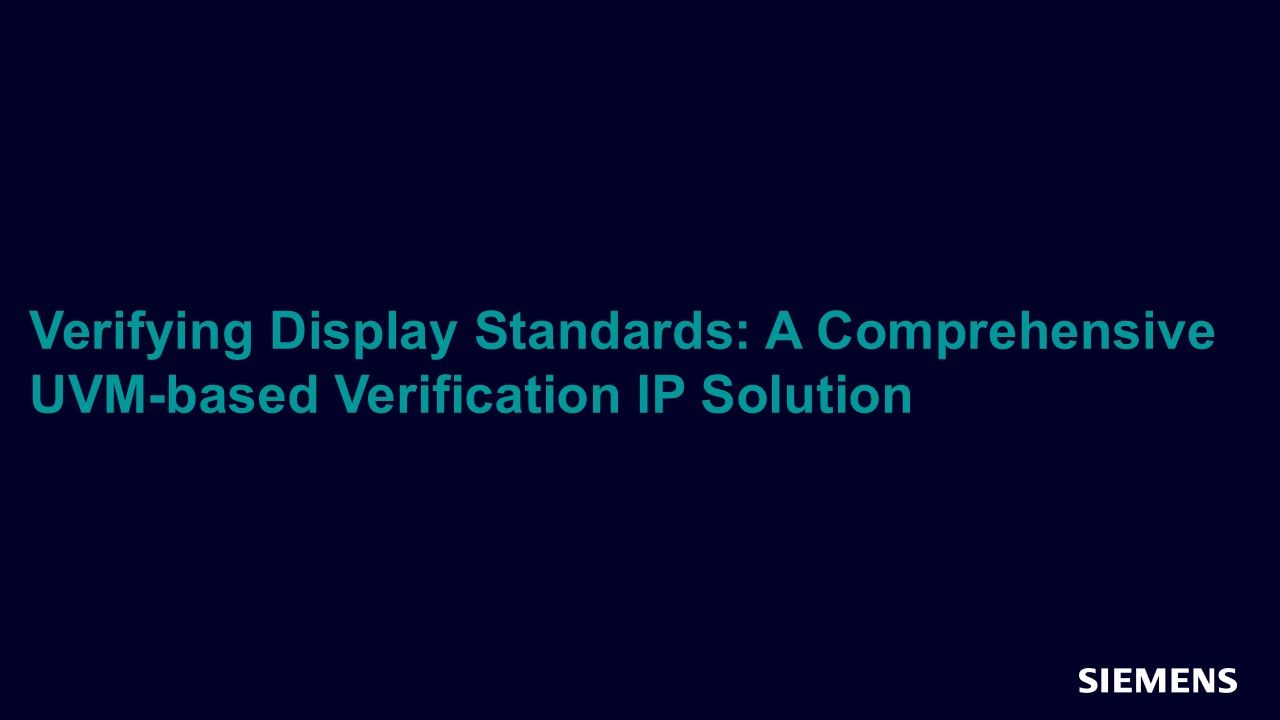
Verifying Display Standards: A Comprehensive UVM-based Verification IP Solution
Article - Mar 02, 2016 by Saumya Agrawal - Siemens EDA
The display protocol IP market is growing at a very fast pace. This is chiefly the outcome of the incredible increase in popularity of a wide variety of display source devices: such as DVD players, computer systems, and display sink/receiver devices: such as televisions, projectors, and display instruments. End users, the consumers, have also become more technologically savvy, increasing the demand for more and better products.
-

Nine Effective Features of NVMe® Questa Verification IP to Help You Verify PCIe® Based SSD Storage
Article - Mar 02, 2016 by Saurabh Sharma - Siemens EDA
This article provides an overview of the NVMe specification and examines some of its key features. We will discuss its pros and cons, compare it to conventional technologies, and point out key areas to focus on during its verification. In particular, we will describe how NVMe Questa ® Verification IP (QVIP) effectively contributes and accelerates verification of PCIe-based SSDs that use NVMe interfaces.
-
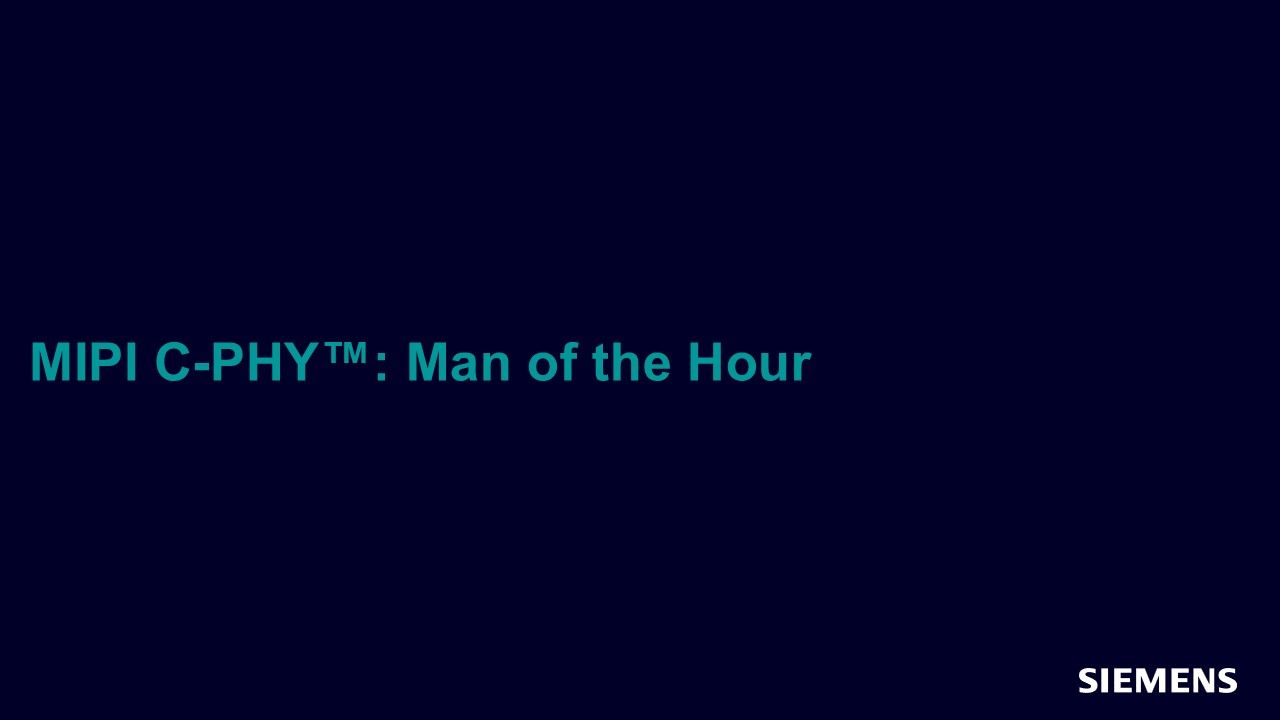
MIPI C-PHY™: Man of the Hour
Article - Mar 02, 2016 by Yogesh Chaudhary - Siemens EDA
The MIPI Alliance signature dishes, C-PHY™ and D-PHY™, are becoming favorite dishes of the imaging industry. These interfaces allow system designers to easily scale up the existing MIPI Alliance Camera Serial Interface (CSI-2™) and Display Serial Interface (DSI™) ecosystems to support higher resolution image sensors and displays while keeping low power consumption at the same time. This gives them an edge to get more into the mobile systems with bigger and better pictures.
-

Total Recall: What to Look for in a Memory Model Library
Article - Mar 02, 2016 by Mark Peryer
Almost all electronics systems use memory components, either for storing executable software or for storing data. Accurate memory models are fundamental. Making these models available in proven, standards-based libraries is essential to functional verification of these kinds of designs.
-
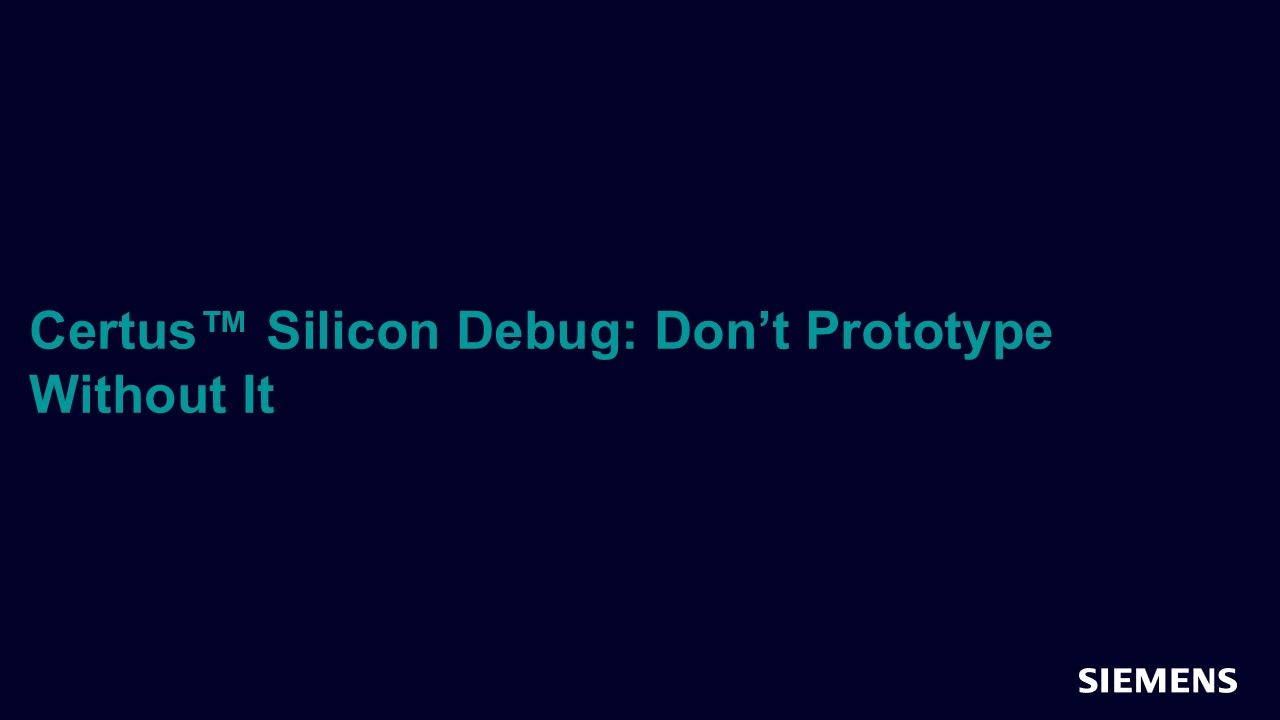
Certus™ Silicon Debug: Don’t Prototype Without It
Article - Mar 02, 2016 by Doug Amos - Siemens EDA
Traditional FPGA debuggers might be acceptable for single FPGA designs, or where long instrumentation iterations might somehow be tolerable, but they run out of steam when faced with a full-scale, FPGA prototype of today's complex SoCs. Certus Silicon Debug is ready to take up the baton and provide prototypers with the visibility and productivity they demand.
-
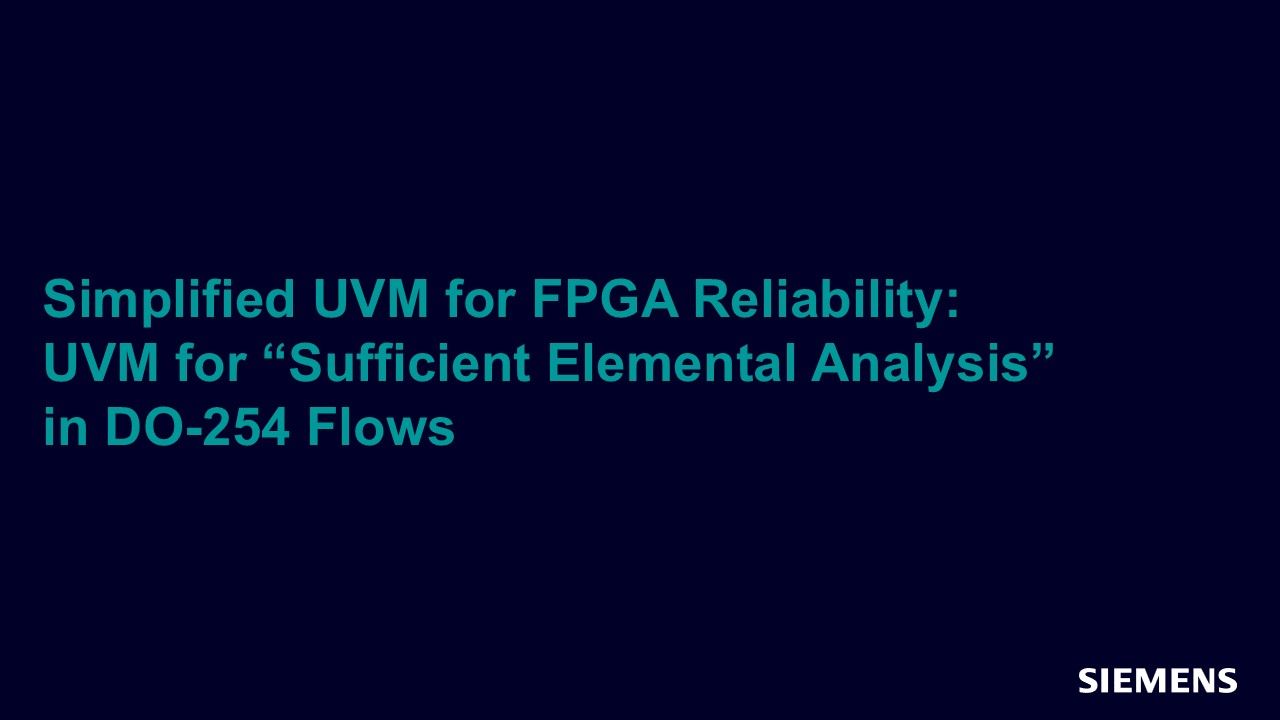
Simplified UVM for FPGA Reliability: UVM for “Sufficient Elemental Analysis” in DO-254 Flows
Article - Mar 02, 2016 by Shashi Bhutada - Siemens EDA
DO-254 and other safety critical applications require meticulous initial requirements capture followed by accurate functional verification. “Elemental Analysis” in DO-254 refers to the verification completeness to ensure that all ‘elements’ of a design are actually exercised in the pre-planned testing. Code Coverage is good for checking if implementation code has been tested, but cannot guarantee functional accuracy.
-
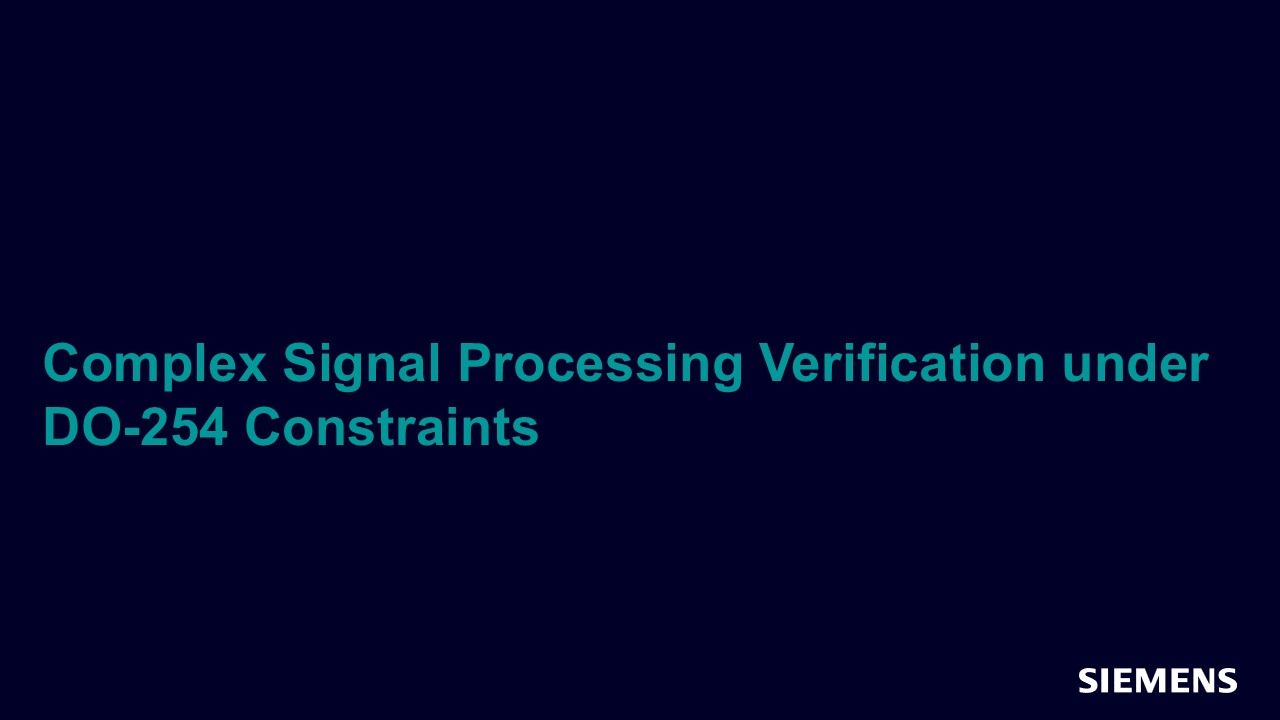
Complex Signal Processing Verification under DO-254 Constraints
Article - Mar 02, 2016 by François Cerisier - AEDVICES Consulting
This article describes a combined requirement and metric driven methodology developed at a customer site for the verification of a complex signal processing SoC block under DO-254 constraints. This methodology also enables both horizontal and vertical reuse of the tests, allowing tests to run both in IP simulation and on FPGA boards at SoC level. This approach is described in a generic way and can be applied to different signal or data processing designs.
-
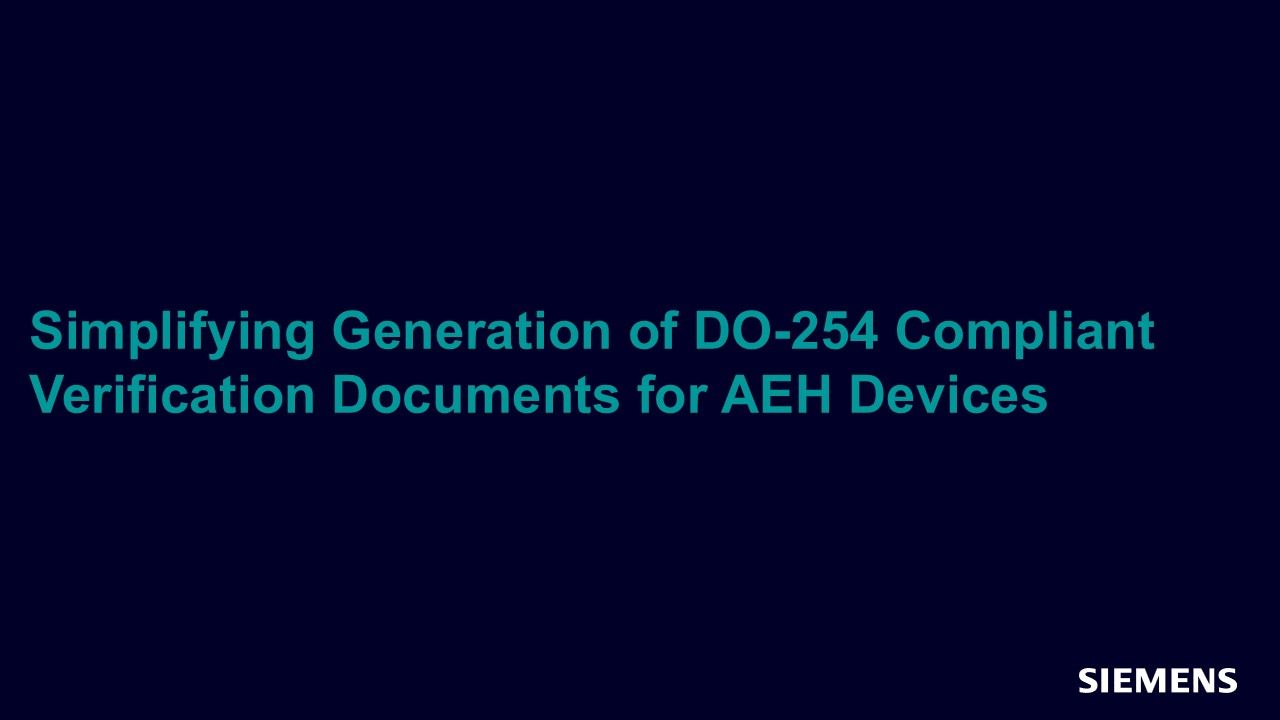
Simplifying Generation of DO-254 Compliant Verification Documents for AEH Devices
Article - Mar 02, 2016 by Hari Patel and Amarkumar Solanki - eInfochips
As per the DO-254 standard, the Airborne Electronic Hardware (AEH) needs accurate assurance of device behavior as intended within optimal operating conditions. For DAL A (Design Assurance Level A) Devices, you need to verify 100% functionality of the device and achieve 100% code coverage, including FEC.
-

DO-254 Compliant UVM VIP Development
Article - Mar 02, 2016 by Ates Berna - ELECTRA IC
Late 2014, we found ourselves in a Project to develop a custom interconnect UVM Compliant VIP. Not only was there a need to develop a custom UVM VIP, but there was a need to plug this to a DUT which has a PCIe and an Avalon Streaming interface on it and perform the advance verification using our custom UVM VIP.
-
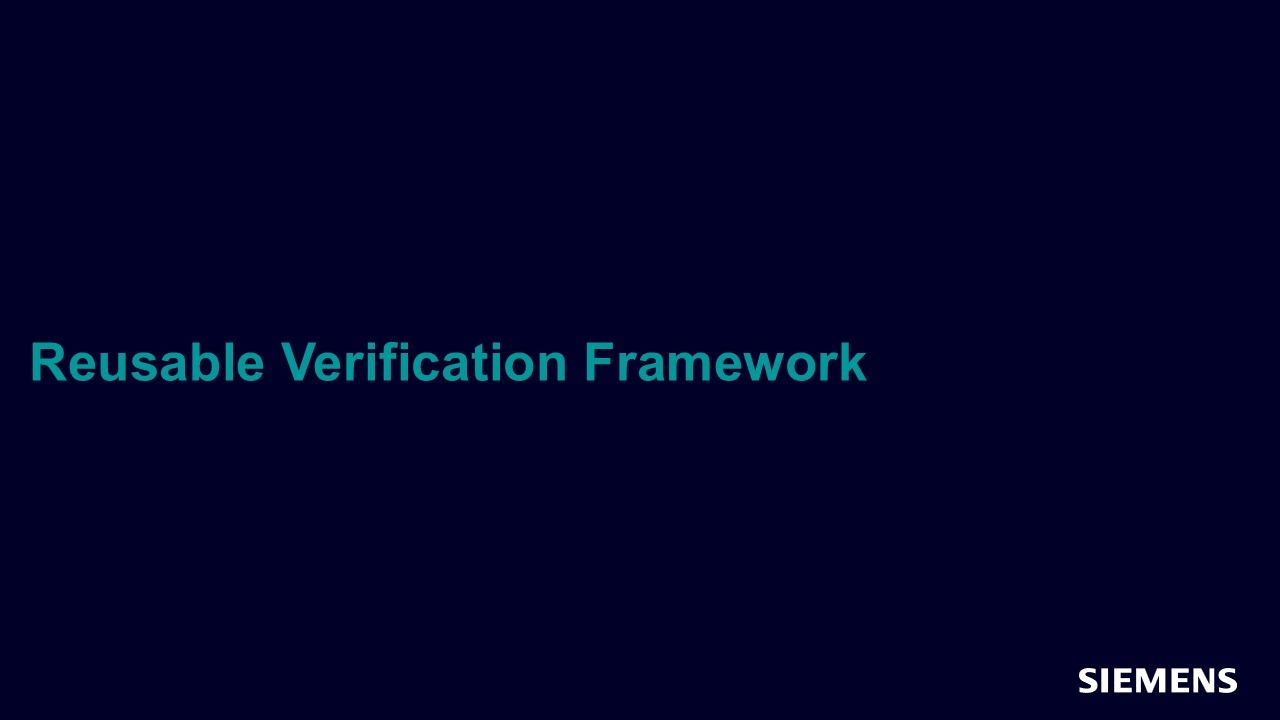
Reusable Verification Framework
Article - Mar 02, 2016 by Gunther Clasen - Ensilica
This article demonstrates how to write interface connections only once and use them in both block- and system-level testbenches. The order is not important: System-level testbenches can be written without all the blocks of the DUT completed, DUT and UVM blocks can easily be interchanged. Taking care not to use virtual interfaces in the UVC but Bus Functional Models (BFM) in the interface instead – so called polymorphic interfaces, UVCs can be fully configurable as well as reusable.
-

Slaying the UVM Reuse Dragon: Issues and Strategies for Achieving UVM Reuse
Paper - Mar 01, 2016 by Bob Oden
With larger and more complex designs the gap between design and verification has grown larger. Because of this the reuse of the testbench both in new projects and within the same project has become very desirable. One of the "promises" of UVM is achieving such reuse. However, in reality, UVM reuse has been limited. A UVM reuse methodology will be presented that provides reuse of components from one testbench to another and within the same testbench from block to chip level.
-
Slaying the UVM Reuse Dragon: Issues and Strategies for Achieving UVM Reuse
Resource (Paper (.PDF)) - Mar 01, 2016 by Bob Oden
This paper identifies the issues that affect UVM reuse and strategies for achieving reuse.
-
Slaying the UVM Reuse Dragon: Issues and Strategies for Achieving UVM Reuse
Resource (Poster Paper) - Mar 01, 2016 by Bob Oden
This paper describes reuse techniques used in the UVM Framework. UVMF includes python-based generators for creating interface, environment and bench level code. Code generated is ready for simulation and emulation.
-

Whose Fault is It? Advanced Techniques for Optimizing ISO 26262 Fault Analysis
Paper - Feb 28, 2016 by Avidan Efody
This paper deals with transient fault analysis towards ISO 26262 certification. First we suggest a way to estimate ISO 26262 required metrics with a user specified level of accuracy using statistical sampling of transient faults. We then propose a technique that reuses existing regression results in order to minimize the resources required to analyze faults in both combinatorial and sequential elements.